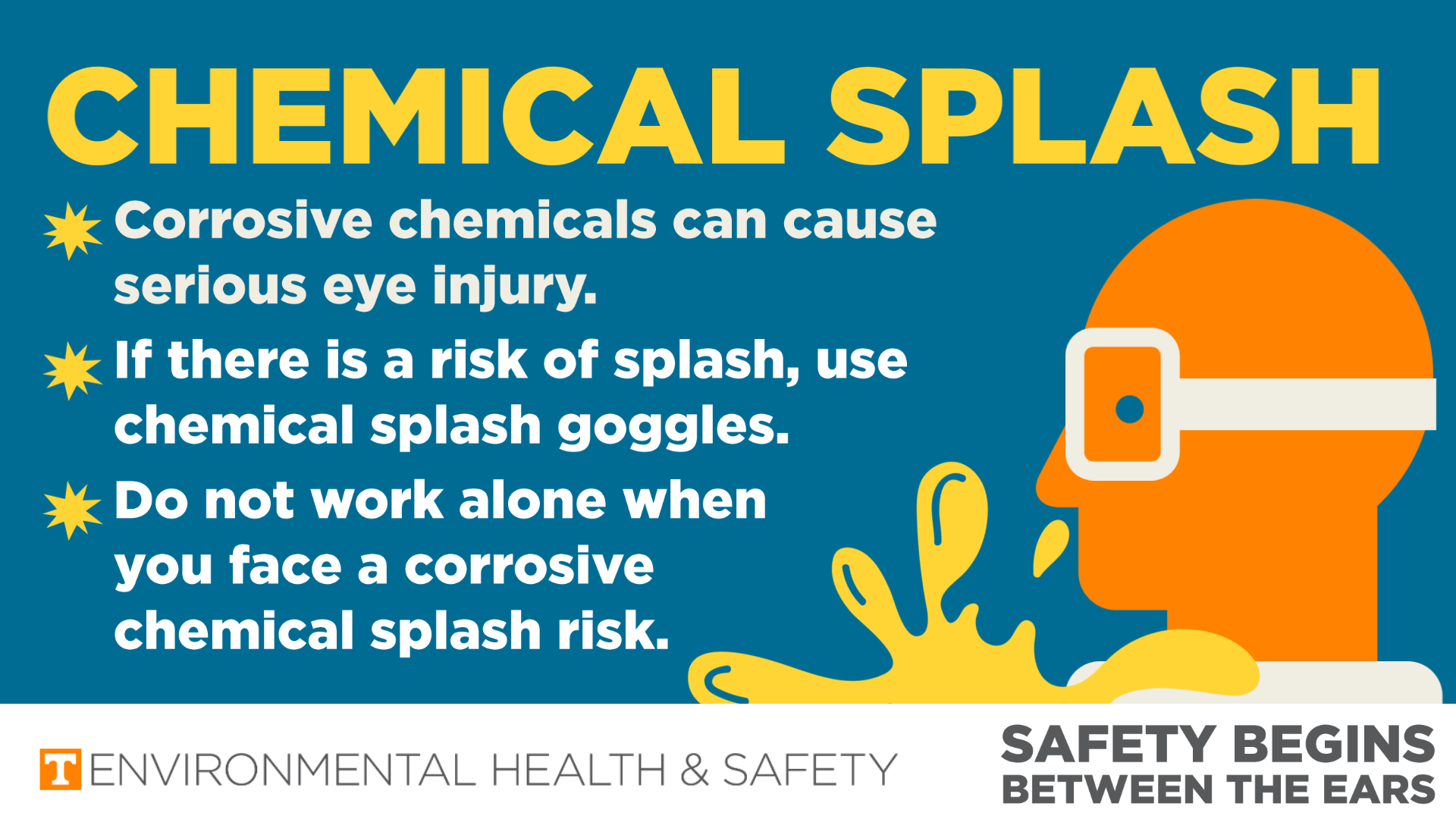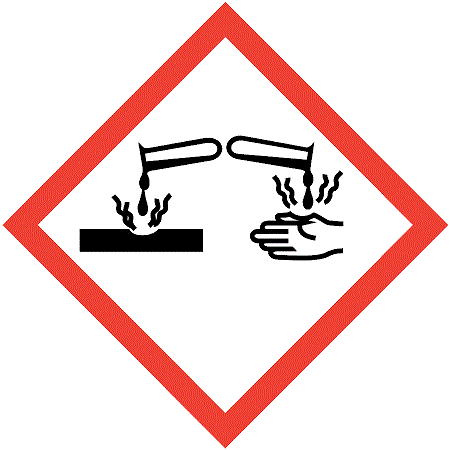Chemical splash risks can occur in many situations. Those at risk include anyone that uses or is exposed to materials that can cause eye injury. This includes:
- Researchers in wet/chemical labs
- Facilities Services workers working with corrosive chemicals
- Anyone else working with corrosive chemicals.

What are corrosive chemicals?
 The word corrosive refers to a chemical that can cause skin corrosion or burns, eye damage, or is corrosive to metals. They can be acids, oxidizers, or bases. When they come in contact with a surface, the surface deteriorates. The deterioration can happen in seconds to minutes, such as concentrated hydrochloric acid spilled on skin; or slowly over days or years, e.g. the rusting of iron in a bridge.
The word corrosive refers to a chemical that can cause skin corrosion or burns, eye damage, or is corrosive to metals. They can be acids, oxidizers, or bases. When they come in contact with a surface, the surface deteriorates. The deterioration can happen in seconds to minutes, such as concentrated hydrochloric acid spilled on skin; or slowly over days or years, e.g. the rusting of iron in a bridge.
Sometimes the word caustic is used as a synonym for corrosive.
The hazard communication pictogram or symbol for corrosive chemicals displays a chemical damaging tissue (a hand) or metal.
What can I do?
Understand the risk.
Corrosive chemicals can cause serious eye injury.
Use the right eye protection
If there is a risk of splash, use chemical splash goggles not impact goggles or safety glasses. Chemical splash goggles form a seal on the face to prevent intrusion of a chemical splash and are indirectly vented. That is, the vents have covers that prevent a splash from intruding. If your goggles have holes that you can see through, these are probably impact goggles and not rated for chemical splash.
Never Work Alone
If you face a corrosive chemical splash risk you should never work alone. If a splash occurs you may need assistance getting help. Minor eye accidents can become serious ones when working alone.